Shaft mechanical engineering is a highly effective manufacturing method used to produce long and cylindrical mechanical components found in engines, which play a crucial role in transferring power and torque within equipment. These shafts come in various types and are essential components widely used across different applications and industries, ranging from construction to industrial machinery.
This article aims to illuminate the intricacies of shaft manufacturing. What is shaft and what type of mechanical shaft? How does process custom shaft machining? We will also have compatible surface finish options. Read on to the end to learn about the helpful challenges and considerations for successful custom shaft manufacturing!

Shafts are cylindrical mechanical components that transmit power, torque, and motion between different elements within a system. They are frequently utilized in machinery, engines, and vehicles, serving a vital function in their functionality. Shafts act as a link between two parts of a system: the primary side, which could be an electric motor, and the secondary side, such as a sprocket or gear. The shaft facilitates the transfer of power between these components.
Various precision shafts exist, each possessing distinct characteristics and capabilities. Each of these shaft mechanical devices must be manufactured with ultra-fine tolerances to withstand specific loads, endure challenging conditions, and operate at desired speeds. This ensures that your machinery or equipment functions smoothly and precisely.
Different industries depend on custom-made shafts as they are integral components in the majority of machines used within these industries. Therefore, precision custom shaft machining, encompassing high levels of accuracy, concentricity, hardness, and surface finish, is essential for optimal fit and performance. This meticulous approach guarantees superior linear motion performance and overall operational efficiency. A custom shaft manufacturer, like Richconn, can help you machine a custom shaft accurately because manufacturing shafts that are not within the required tolerance will experience complications like runouts, which will adversely affect the quality of the machinery.

Machined shafts are of various types, each with its different load capacity, rotational speed, and uses. Here are some of the commonly used CNC machining shafts:
Solid Shaft
The solid shaft, a single continuous cylindrical material such as steel or aluminum, represents the most basic and straightforward type of shaft. It is frequently employed in low-power and low-speed applications, including hand tools, household appliances, and small machinery. Its uncomplicated design and inherent durability render it a dependable option.
Hollow Shaft
Also known as a tubular shaft, this type of CNC machining shaft features a hollow, cylindrical design with a central hole or void running through its length. The hollow construction makes hollow shafts lighter in weight in contrast to solid shafts of similar size, making them suitable for applications where weight reduction is crucial, such as in conveyor systems, pumps, and medical devices.
Threaded Shafts
This CNC machining shaft design incorporates internal or external threads along its length, allowing it to accommodate various components like bearings, gears, or pulleys that need to be mounted on the shaft. This form of connection provides a way to transition between different component sizes, making it a common feature in mechanical power transmission systems.
Tapered Shaft
The tapered shaft has a gradually decreasing or increasing diameter along its length, enabling a secure fit for components wheel hubs, pulleys, or gears must be securely mounted. The taper allows these components to be easily slid onto the shaft and then locked in place, often using a keyway or a tapered fit.
Splined Shaft
Splined shafts feature longitudinal parallel grooves or ridges, called splines, running along its length. These splines allow the shaft to fit into matching splines machined into a corresponding component like a pulley or gear., making splined shafts a popular choice in automotive, industrial, and aerospace applications.
Keyed Shaft
A keyed shaft is a machined shaft with a flat surface or groove, running along its length. As such, the keyway provides a secure mounting point for components like pulleys, sprockets, or gears, preventing them from slipping on the shaft. The machined keyways have the same width as a key. Keyed shafts are ideal for corresponding a connection in high-torque applications like motors and pumps.

CNC shaft machining is a challenging process that requires customized processes, and specialized tools.
In custom shaft manufacturing, the initial phase involves developing a comprehensive design program that takes into account factors such as alignment, torque requirements, and environmental conditions. It is crucial to specify the shaft material, length, and diameter requirements. Subsequently, a CAD file is generated for the precision shaft using CAD software.
The selection of the ideal material for precision shaft machining should align with the specific application requirements. Engineers commonly utilize materials like steel, aluminum, titanium, and brass to manufacture shafts, considering factors such as cost, tensile strength, and corrosion resistance.
When setting up a CNC machine for shaft manufacturing, it is crucial to select a suitable machine type, such as a milling machine or lathe. Prepare the workpiece and choose the correct cutting tool, such as end mills or turning tools. Additionally, ensure the workpiece is securely held in place with appropriate fixtures and use sharp cutting tools.
There are a variety of surface finish treatments that are compatible with custom machined shafts. These finishing processes serve to improve both the visual appearance and functionality of the machined shafts, ensuring they meet the specific requirements of their intended applications. Common surface finish treatments that are beneficial for enhancing custom shafts include polishing, bead blasting, electroplating, and anodizing.
Custom shaft manufacturers often employ various techniques in machining precision shafts to achieve preferred tolerances and surface finish. Here are typical custom shaft manufacturing techniques
CNC Milling
CNC milling is a versatile subtractive process that employs a rotary multi-point tool to machine features like splines and keyways on a shaft. This technique ensures consistent and precise cuts on the stationary shaft material to shape it according to the desired shapes.
CNC Turning
CNC turning is ideal for machining cylindrical turned parts to manufacture shafts. This technique is best suited for machining cylindrical turned parts like custom shafts. Specialized tools cut material from the surface of the shaft as the chucks rotate it. CNC shaft turning machine provides the required diameter and surface finish for machined shafts. Most especially, the CNC turning technique is your go-to option for high-volume production situations when you need to machine thousands of shafts as quickly as possible.

CNC Drilling
CNC drilling is suitable for machining holes and channels across custom shafts, allowing gears to attach to the shaft. Machinists use this technique to machine grooves of different depths and diameters in these cylindrical components, allowing the machined shaft to function as expected. Drilling is cost-effective and simpler than most machining processes.
CNC Grinding
The CNC grinding process involves the use of an abrasive spinning wheel to even out the rough surface of a machined shaft, ensuring the shafts meet the preferred dimensions and tolerances. Although this technique doesn’t use a cutting tool, it utilizes a grinding wheel that engages the shaft’s surface to smoothen it.
Electrical Discharge Machining (EDM)
EDM, a versatile non-traditional machining method, involves removing unwanted material from a workpiece by vaporization. This technique, known as electric discharge machining, is capable of creating small and intricate features on solid machined shafts.
The surface finish compatible with a custom machined shaft depends on its intended application. Product engineers often use these surface finish options to enhance performance, durability, hardness, corrosion, and wear resistance. Here are common surface finish choices suitable for custom shafts:
Bead Blasting
Bead blasting is an excellent surface finish that involves the release of steel beads or fine glass at high pressure to clean the surface of your machined shafts. The bead blast finish cleans the surface of the shafts giving it a clean surface featuring a dull or satin look.
Anodizing
This surface finish choice is widely utilized, particularly suited for the final treatment of aluminum machined shafts. It forms a durable, corrosion-resistant layer on the surface of the custom shaft, enhancing its visual attractiveness and protection against corrosive elements. Additionally, anodized shafts offer the opportunity to incorporate bright and vibrant colors.
Polishing
Polishing as a surface treatment helps to prevent machined shafts from contamination and oxidation. The process involves using an abrasive material to eliminate nicks and scratches from your custom shafts’ surface, improving the reflective properties and corrosion resistance.
Chrome Plating
Chrome plating creates a thin chromium coating on the machined shaft, enhancing its hardness and resistance to corrosion. This tough and shiny layer of chromium can withstand harsh environments and continuous use without deforming.
Custom Shafts can be a challenge to machines. You need to carefully evaluate the design, tools, and materials before starting the process.
1. Design Consideration
In the manufacturing of custom shafts, challenges may arise in meeting dimensional accuracy requirements. These issues can stem from factors such as incorrect drawings, improper dial usage, lack of trial cutting, inaccurate measurements, and the impact of cutting heat. To overcome these challenges, it is crucial to ensure a thorough understanding of the dimensional specifications from the part drawing, utilize the dial accurately, conduct trial cutting, verify and correct the zero position, employ precise measurement techniques, avoid measurement at high workpiece temperatures, and use cutting fluid to manage temperature levels.
2. Produce Taper
Manufacturing custom shafts may face challenges associated with producing taper. This issue can arise due to factors such as gradual wear of the turning tool in the middle, excessive overhang of the workpiece during clamping leading to displacement caused by cutting forces in turning, and lack of parallelism between the guide rail of the lathe bed and the axis of the lathe spindle when using the chuck for clamping and longitudinal feed in turning.
To address these challenges, consider selecting appropriate cutting tool materials or reducing cutting speeds to mitigate tool wear. Additionally, minimize the extension length of the workpiece or utilize back center support to enhance clamping rigidity. Furthermore, ensure the adjustment of the lathe spindle's parallelism to the lathe guide rail for improved machining accuracy.
3. Unqualified Roundness
In the manufacturing of custom shafts, another challenge can be the issue of unqualified roundness. This problem may be caused by factors such as excessive clearance of the lathe spindle, non-uniform blank allowance, and excessive feed of the back tool during the cutting process.
To overcome these challenges, it is important to inspect and properly adjust the lathe spindle clearance before turning. If the main shaft bearing is significantly worn, consider replacing the bearing. Additionally, consider conducting fine turning after semi-fine turning for improved roundness quality.
4. Unqualified Surface Roughness
The challenge in custom shaft manufacturing related to unqualified surface roughness may be caused by factors such as low rigidity of the lathe, vibrations from unbalanced transmission parts or loose spindle, inappropriate geometric parameters of the turning tool, and improper cutting amount selection.
To overcome this challenge, it is recommended to adjust the clearance of various lathe components to reduce or prevent lathe vibrations, ensure reasonable geometric parameters, avoid excessive feed, and use appropriate finishing allowance and cutting speed for improved surface roughness.
Richconn, one of the best custom shaft manufacturers, has professional CNC machining teams to contact whenever you need help with your custom shaft manufacturing project. They will help you in tool selection, and suggest machining strategies tailored to your specific needs. Richconn is your one-stop CNC machine shop for quality and reliable precision machined shafts. Richconn has machined several custom shafts of superior quality, built-to-spec shafts that meet stringent quality standards.
Use Richconn’s CNC milling and CNC turning services. Try today, and unlock the potential of your projects with unparalleled accuracy and efficiency.
Custom shaft manufacturing is a streamlined process that focuses on producing precise long and cylindrical mechanical components for engines according to specific design specifications. The array of machined shafts available each possess distinctive designs and characteristics tailored to specific application needs. This comprehensive guide offers detailed insights into the variety of shaft types and expert advice to enhance the success of your custom shaft manufacturing project.
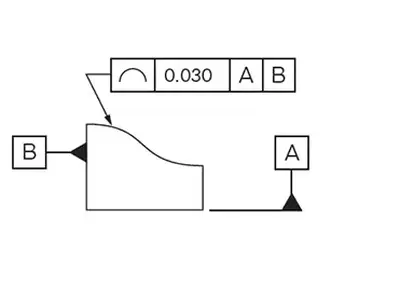 Unveiling Precision: Mastering Surface Profile for Engineering ExcellenceNovember 21, 2023Engineering precision is more than a requirement; it's a commitment to excellence. Amidst the intricate world of engineering, understanding the nuances of surface profile becomes paramount.view
Unveiling Precision: Mastering Surface Profile for Engineering ExcellenceNovember 21, 2023Engineering precision is more than a requirement; it's a commitment to excellence. Amidst the intricate world of engineering, understanding the nuances of surface profile becomes paramount.view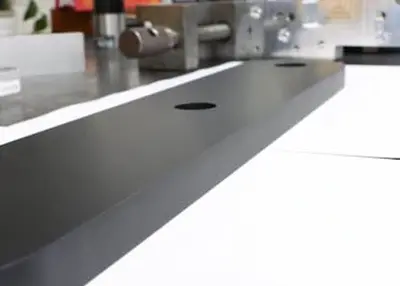 6 Benefits of Partnering With a Trusted CNC CompanySeptember 13, 2023Why choose a CNC company to partner with? Let’s explore the advantages of partnering with a CNC company for precision machining and top-quality parts.view
6 Benefits of Partnering With a Trusted CNC CompanySeptember 13, 2023Why choose a CNC company to partner with? Let’s explore the advantages of partnering with a CNC company for precision machining and top-quality parts.view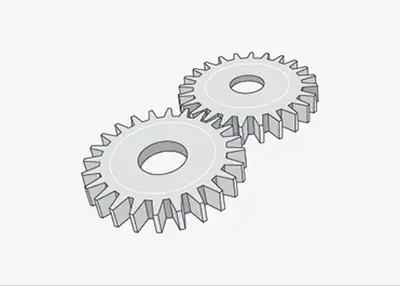 The Importance of Material Science in Component Interaction.October 18, 2023Even a perfectly designed injection molded part can potentially disappoint if it is made from the wrong material. It is often difficult to select the right materials from hundreds of thermoplastics and elastomers to meet the requirements of the application. A variety of factors, such as mechanical strength, UV resistance, lubricity, wear resistance, and chemical and UV resistance should be carefully considered when selecting materials for injection molding.view
The Importance of Material Science in Component Interaction.October 18, 2023Even a perfectly designed injection molded part can potentially disappoint if it is made from the wrong material. It is often difficult to select the right materials from hundreds of thermoplastics and elastomers to meet the requirements of the application. A variety of factors, such as mechanical strength, UV resistance, lubricity, wear resistance, and chemical and UV resistance should be carefully considered when selecting materials for injection molding.view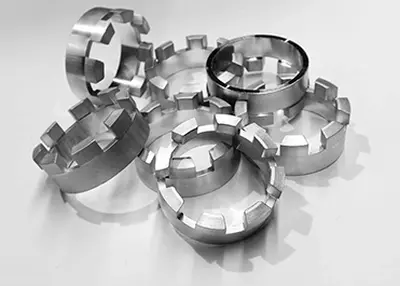 Complete List of Machined Hardware Product TypesOctober 19, 2023Hardware: traditional hardware products, also known as "small hardware". Refers to gold, silver, copper, iron, tin five kinds of metal. Artificial processing can be made into knives, swords and other works of art or metal devices. In modern society, hardware is more extensive, such as hardware tools, hardware parts, daily-use hardware, construction hardware and security products. Most of the small hardware products are not final consumer goods.view
Complete List of Machined Hardware Product TypesOctober 19, 2023Hardware: traditional hardware products, also known as "small hardware". Refers to gold, silver, copper, iron, tin five kinds of metal. Artificial processing can be made into knives, swords and other works of art or metal devices. In modern society, hardware is more extensive, such as hardware tools, hardware parts, daily-use hardware, construction hardware and security products. Most of the small hardware products are not final consumer goods.view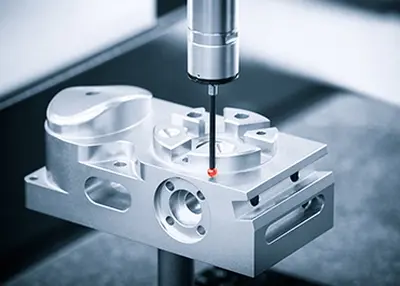 Rapid Prototyping for Every Phase of Product DevelopmentOctober 11, 2023Time to market is critical to your competitive advantage. However, forgoing prototyping is a big risk that can cost you production costs, lost revenue, and your reputation if your product doesn't...view
Rapid Prototyping for Every Phase of Product DevelopmentOctober 11, 2023Time to market is critical to your competitive advantage. However, forgoing prototyping is a big risk that can cost you production costs, lost revenue, and your reputation if your product doesn't...view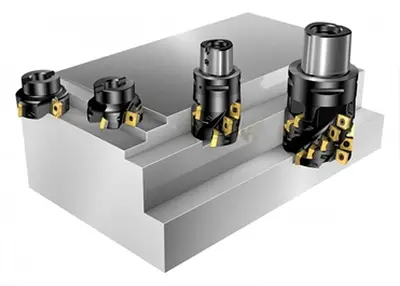 What Are the Processing Principles of Precision Machining?December 30, 2022What are the processing principles of precision CNC machining? What safety precautions are there when performing precision CNC machining?1. Processing principles of precision NC machining (1) In order...view
What Are the Processing Principles of Precision Machining?December 30, 2022What are the processing principles of precision CNC machining? What safety precautions are there when performing precision CNC machining?1. Processing principles of precision NC machining (1) In order...view